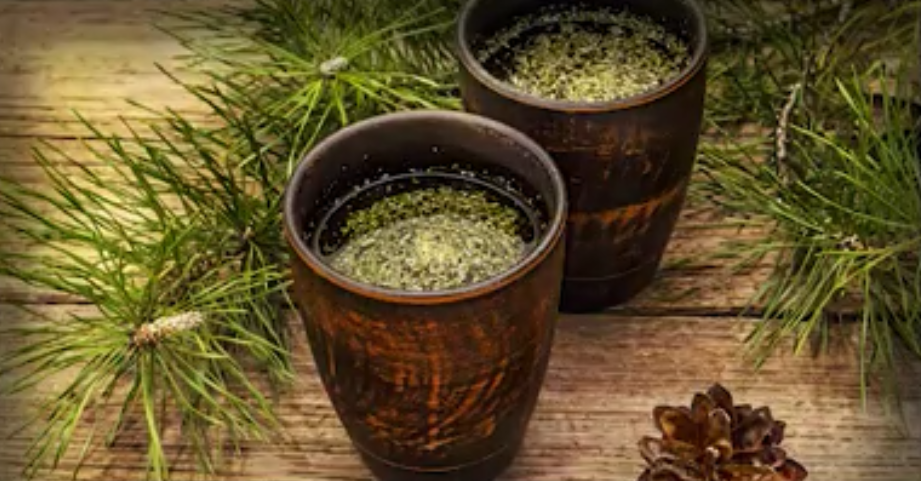
Fernleaf biscuitroot (Lomatium dissectum), a natural antiviral
Fernleaf biscuitroot is a broad-spectrum antimicrobial used to address the symptoms of viral infections. It is a species of flowering plant in the carrot family. The herb is also known by the common name fernleaf biscuitroot. The plant is native to much of western North America and it grows in different habitats. The perennial herb can reach up to 1.4 meters tall and it grows from a thick taproot. Fernleaf biscuitroot is a medicinal plant commonly used in Native American cultures. The potent antiviral plant was used by Native Americans during the 1918 influenza epidemic. According to a report from the University of California, the herb "may prove to be a strong modern-day cold and flu remedy." (Related: Prepper medicine: How to use chokecherry, a versatile medicinal plant.) In an article about fernleaf biscuitroot, experts reported that the Native Americans called the medicinal root of this plant "the Dortza" or "heap powerful medicine." The natural medicine is extracted from the hard root and turned into a tincture. The Washoe Indians collected fernleaf biscuitroot in the months of September and October, which was when the richest supply of oils was concentrated in the large underground root. According to data, the aromatic root contains at least five or six gums, oils and oleoresins. After collecting the plant's root, slice longitudinally to expose the volatile oils to the oxidizing (polymerization) effects of the air. This then converts the oils to a stabilized resin. Here are some of the culinary uses of fernleaf biscuitroot:- The root can be dried and ground into a powder. This powder is then mixed with cereal flour or added as a flavoring to soups or other dishes.
- The roots can be boiled to make a refreshing and nutritious drink.
- Young fernleaf biscuitroot seed sprouts can be consumed raw.
- Fernleaf biscuitroot is often eaten raw, baked, roasted and dried and turned into flour.
How does fernleaf biscuitroot work?
The plant's antiviral action is derived from the volatile oils in the root. These oils can help clear respiratory issues that are present in viral infections because of inflammation like cough, sore throat and a stuffy and runny nose. Fernleaf biscuitroot was used to address the secondary infections caused by many strains of influenza. To use fernleaf biscuitroot as an antiviral treatment for cold or flu symptoms, take one-fourth teaspoon of the tincture every three to four hours for five days in one cup of hot water. Make sure you keep track of your usage on a dosing chart. If you can't grow fernleaf biscuitroot in your home garden or forage for it, you can also buy tinctures to treat cold or flu symptoms if you are sick. Watch the video below to know how manuka honey can help relieve a cough or sore throat. This video is from the Health Ranger Store channel on Brighteon.com.More related stories:
Prepper medicine: How to use red raspberry, a medicinal plant full of vitamins. Exploring the health benefits of false goat’s beard, a Himalayan medicinal plant. Black cutch, an Asian medicinal plant, contains compounds that are effective against the dengue virus. Sources include: ReadyNutrition.com HealthBenefitsTimes.com Brighteon.comSurvival basics: 7 Essential skills for modern preppers
By Zoey Sky // Share
Australia to buy up to 5 nuclear-powered submarines from the US – and China isn’t happy about it
By Arsenio Toledo // Share
Support brain health and improve cognitive function with these herbs and spices
By Olivia Cook // Share
Be flexible: Improvise to survive with rubber bands
By Olivia Cook // Share
Since ancient times, pine needles have been an important part of vibrant health
By Ethan Huff // Share
An invisible assault: How everyday heavy metals sabotage brain health
By willowt // Share
Pentagon warns of China's rapidly expanding nuclear arsenal
By kevinhughes // Share
FCC grounds new Chinese drones in sweeping security move
By avagrace // Share
The methylation switch: Scientists identify diet that can turn back the cellular clock
By jacobthomas // Share
Renaissance or Ruin: A wake-up call for cultural revival and self-sufficiency
By kevinhughes // Share
Weight loss in midlife may trigger brain inflammation, study finds
By avagrace // Share











